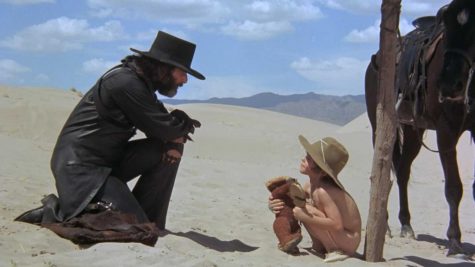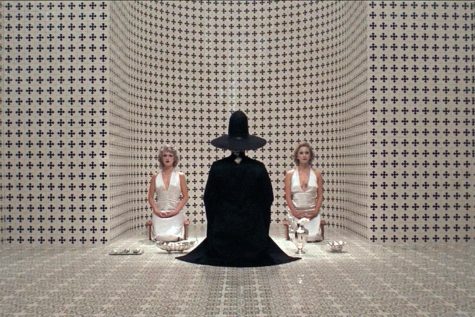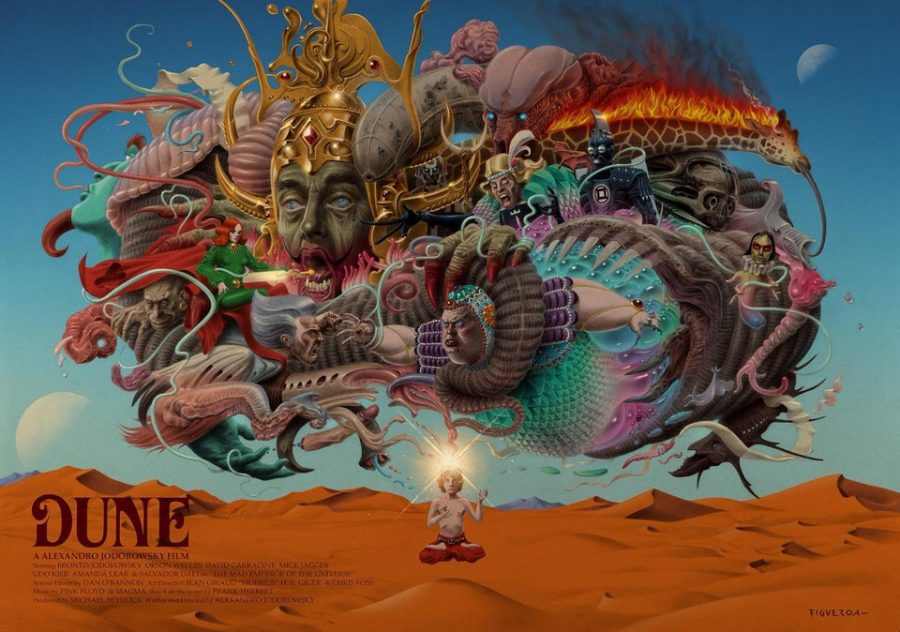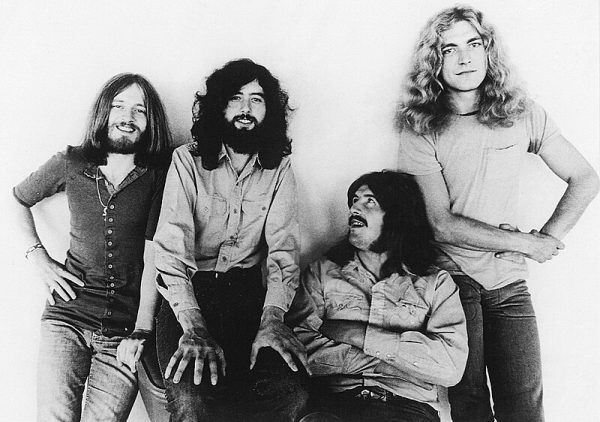The Greatest Film Never Made: Jodorowsky’s Dune (Part One)
A film beyond imagination. A film that would have changed everything, not just movies, but the world. According to its director, it would have been like the coming of a god, a prophet to open the minds of everyone on earth. It would have been a film so massive that even though it was never made, it has influenced nearly every other science fiction film since it’s conception. There were over 3,000 drawings of costumes, spaceships, planets, and castles, as well as a complete storyboard, script, cast, and crew. Everything was planned and ready to go, but five million dollars stood between Alejandro Jodorowsky and his dream. This is the story of a book, a director, and a magical film that is still considered to be the greatest movie never made.
Part One: The Filmmaker
Before we can talk about the film, we need to talk about its creator, the surrealist and experimental filmmaker Alejandro Jodorowsky. Born in 1929 to Jewish-Ukrainian immigrants in Chile, Jodorowsky had a difficult childhood. He was poor and bullied by schoolmates for his accent and different looks. He immersed himself in the arts and eventually moved to France to study mime. There he discovered film, and created his first mime short, La Cravate. He moved to Mexico to further his art education and helped pioneer the theater Panic Movement. This was an experimental type of theater that aimed to be shocking and chaotic. Performers stripped on stage, sprayed fake blood on the audience, and sometimes killed live animals. Unorthodox and surreal, Jodorowsky toed the line of beauty and terror, a theme that would continue throughout his works. His first feature film, titled Fando y Lis, is a story about an apocalyptic world in which two people search for the fabled city of Tar. On their journey, they encounter strange people and go through surreal experiences. It was full of Panic Movement themes of sex and extreme violence, and had to be filmed in secret. It caused mass riots in Mexico City upon its release in 1967 and was eventually banned in Mexico. Jodorowsky had to avoid several attempts on his life, but his filmmaking career had just begun.

Next, Jodorowsky wrote, directed, and starred in El Topo. I have heard it described as an “acid western” and a “spiritual journey,” but I honestly have no idea what this film is about. Needless to say, it put Jodorowsky on the map. The deep spirituality and philosophy mixed with extreme violence and explicit sexuality attracted the counterculture movement of the late 1960s. The Beatles’ John Lennon and his wife Yoko Ono called it their favorite film, and talked their manager Allen Klien into purchasing the distribution rights. They played the film every night at midnight in New York for a full year to packed houses, cementing its title as the first “midnight movie,” and paving the way for other cult classics like Eraserhead, The Rocky Horror Picture Show, and The Room.

Jodorowsky was hailed as a genius and was able to make connections with the artists in the burgeoning Hollywood New Wave movement. Those connections allowed him to secure funding and total creative freedom for his next project, The Holy Mountain. It was his most ambitious project yet, detailing the story of a man traveling up a mountain to reach enlightenment. It originally starred another Beatle, guitarist George Harrison, but he backed out because of the frequent nude scenes. Jodorowsky aimed to make “an experience, not just a story,” and so he did. He was once again declared a genius by the LSD fueled counterculture, and Allen Klein reached out asking him to make another film. But this one was different. It was an adaptation of the erotic novel, The Story of O. Jodorowsky declared it sexist, too sexual, and not spiritual enough, but avoided telling Klein, who had already secured the rights to make the project. Jodorowsky moved to Paris to avoid making the project, angering Klein to no end. While in Paris, he was contacted by French producer Michel Seydoux, who had distributed El Topo and Holy Mountain in France. Seydoux asked him if there was another project he was interested in doing, and, without having even read the book, without even knowing what it was about, Jodorowsky enthusiastically said, “Dune.”
Part Two: Dune

For those who don’t know, Dune is a 1965 science fiction novel by Frank Hebert. It was conceived out of Herbert’s fascination with the power of the Oregon Sand Dunes, how they could move and “swallow whole cities.” He then set out on a six-year mission to write this book, compiling all of his interests: religion, environmentalism, politics, heroes, and prophets. It was originally published in two parts for Analog sci-fi magazine. It was a massive success, and redefined the sci-fi genre. The story follows Paul, the son of Duke Leto Atreides and the Bene Gesserit Lady Jessica. Their family, the Atreides, are given the planet Arrakis, or Dune, the richest and most dangerous planet in the universe. It is all desert, completely uninhabitable with giant worms that can sense every vibration above the surface. However, it is the only planet where the Spice can be found. The Spice, or “melange,” is a sort of drug that gives people hyper-awareness and allows for spaceships to be piloted at faster-than-light speeds. The Atreidies, on their way to Arrakis, begin to expect a trap, and everything evolves from there. I am just scratching the surface with the plot here, there are so many things happening at once that all intertwine to create a crazy complicated and awesome story.
Before Dune, science fiction literature consisted of future speculation, telling stories of dystopias as warnings for the modern world. Dune, rather, told the story of a completely different world, one so far in the future that it was almost completely unrecognizable, yet it reflected on the modern world in a metaphorical way. This is the sci-fi that we know today, the almost Lord of the Rings-esque science fiction of Star Wars and Foundation. Dune was picked up by almost every college kid in the mid-60s, and is now considered to be the highest-selling sci-fi novel of all time.
Like most successful books, there is a long history of film adaptations. The film version of sci-fi at the time was made up almost entirely of B-movie monster flicks, think Plan 9 From Outer Space and The Wasp Woman. The rare exceptions to this were two films from 1968, Planet of the Apes and the Stanley Kubrick masterpiece, 2001: A Space Odyssey. Both of these films had been box office hits, but they were considered outliers in the studios’ minds. The producer of Planet of the Apes, Arthur P. Jacobs, was willing to take another risk, and he bought the film rights to Dune in the early 1970s, but his early death in 1973 brought all preparations to a halt. In 1974, the rights were auctioned off to Jean-Paul Gibon and his french production company headed by Michel Seydoux (remember him from earlier?) Now things have come full circle, and we can finally talk about Jodorowsky’s Dune.





